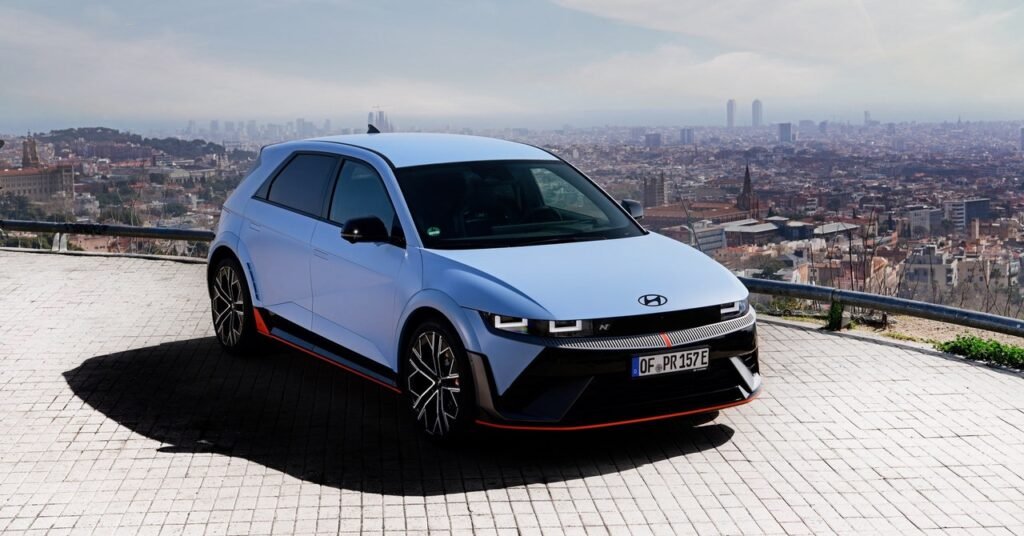Many car companies have crazy-performance sub-brands that cater both to auto engineers’ genetic predisposition to show off, and customers for which normal acceleration and handling simply isn’t hairy enough. BMW has its M division, Range Rover has SVR, or Special Vehicle Operations, Hyundai has N.
The “N” apparently refers to two things: the Namyang district in South Korea, home of Hyundai’s Global Research & Development Center, where N was founded; and the Nürburgring in Germany, where all the N models are tested at ridiculous speed until, one presumes, their tires explode in clouds of shredded rubber.
Well, Hyundai has its first electric N model, the Ioniq 5 N. WIRED was mighty impressed with 2021’s vanilla Ioniq 5 and found it hard to fault. One criticism we did have at the time was that some might have expected the EV to be a touch sportier. The 5 N is here to address this flaw—perhaps to an excessive degree. It’s also clear that Hyundai has developed this Ioniq 5 on steroids with the intent that it be what most auto obsessives call a “proper driver’s car,” whether you’re into electric or not.
Audio Illusion
Photograph: Hyundai
Apart from the max 641 bhp, zero to 62 mph in a shocking 3.4 seconds, top speed of 162 mph, a race mode that drops power just enough to let the N lap the Nürburgring in under eight minutes twice without overheating, and a frankly bewildering array of customizable options for tweaking almost every aspect of the 5 N’s handling and performance, the most immediately obvious feature here of a driver-focused approach is the N’s “e-Shift.”
With e-Shift engaged, the steering wheel paddles combine with the car’s motors, regenerative braking system, and 10-speaker sound setup (two outside, eight inside) to simulate internal-combustion car gear changes—not just audibly, but physically too.
Fake engine noise roars throughout the cabin, while the motors and the regen braking manipulate torque resistance to simulate the momentary dips and changes in thrust you get while shifting gears. These “dips” are married with a corresponding change in fake noise, and combine to produce an eerily convincing sensation of driving an ICE car. There’s even increased regen braking and better acceleration at higher fake revs.
Of course, Hyundai is blatantly pulling a con here and trying to fool you. But as with all illusions, if it works, even though you know it’s complete artifice, you just don’t care. And I didn’t. In fact, I loved it. And this is from someone who has until now detested—or perhaps “loathed” is a better word—fake engine noise.
TikTok content
This content can also be viewed on the site it originates from.
How Hyundai has pulled off this trick is seemingly down to a whole year of software development plus extensive simulation and track testing just for this feature. Tyrone Johnson, new managing director of Hyundai Motor Europe Technical Center, and previously one of the people behind the recent Ford Focus RS, confessed to me that he wasn’t immediately sold on the concept.
